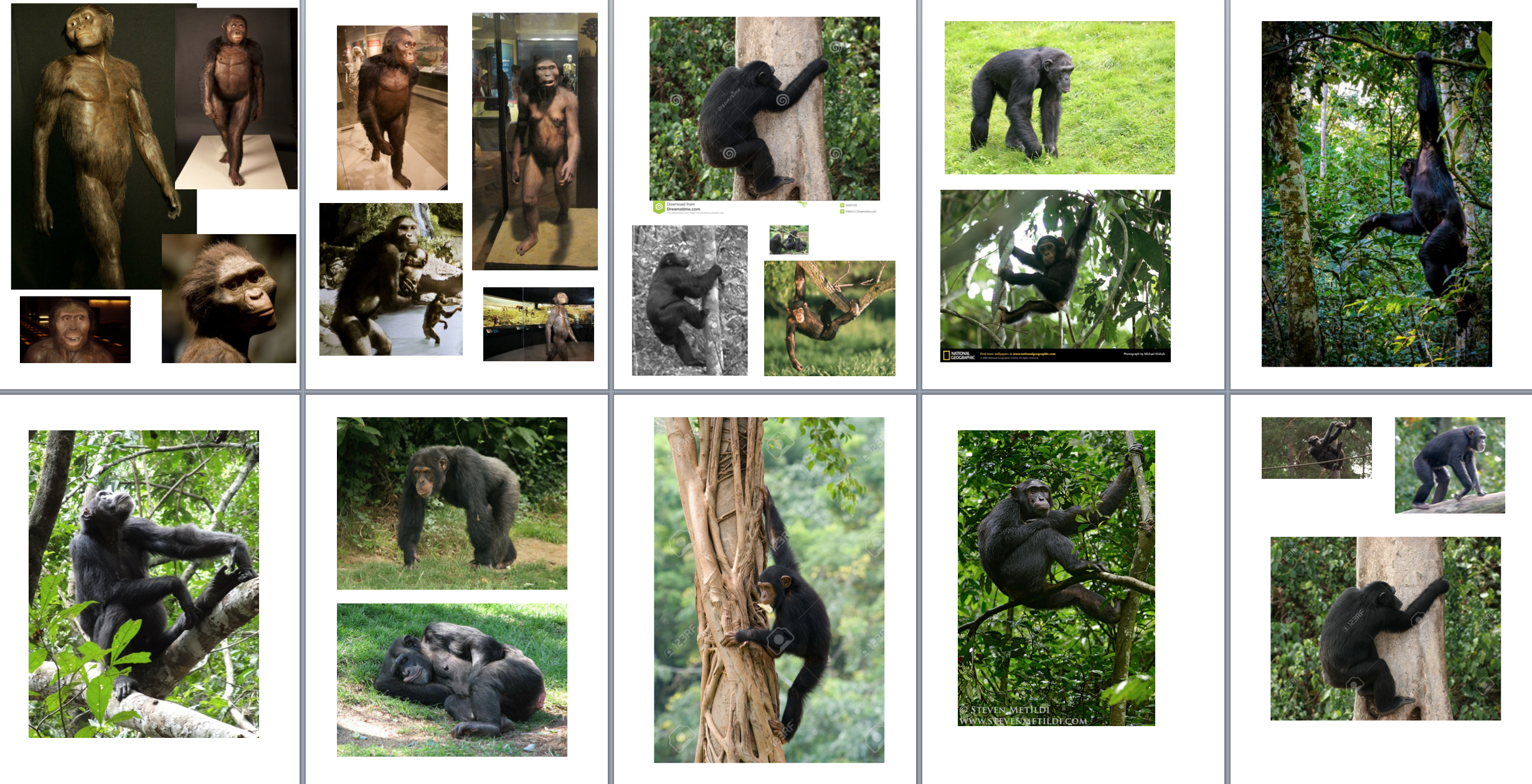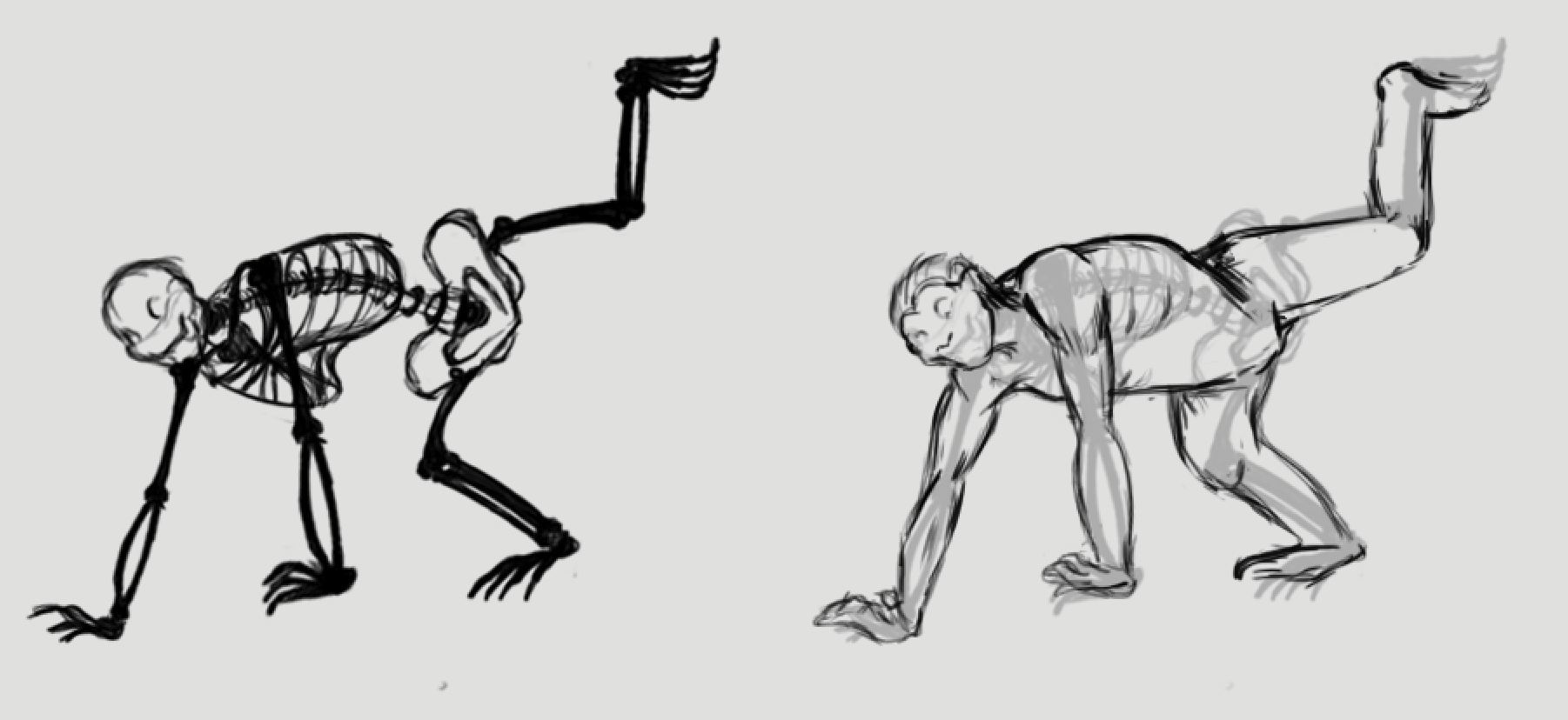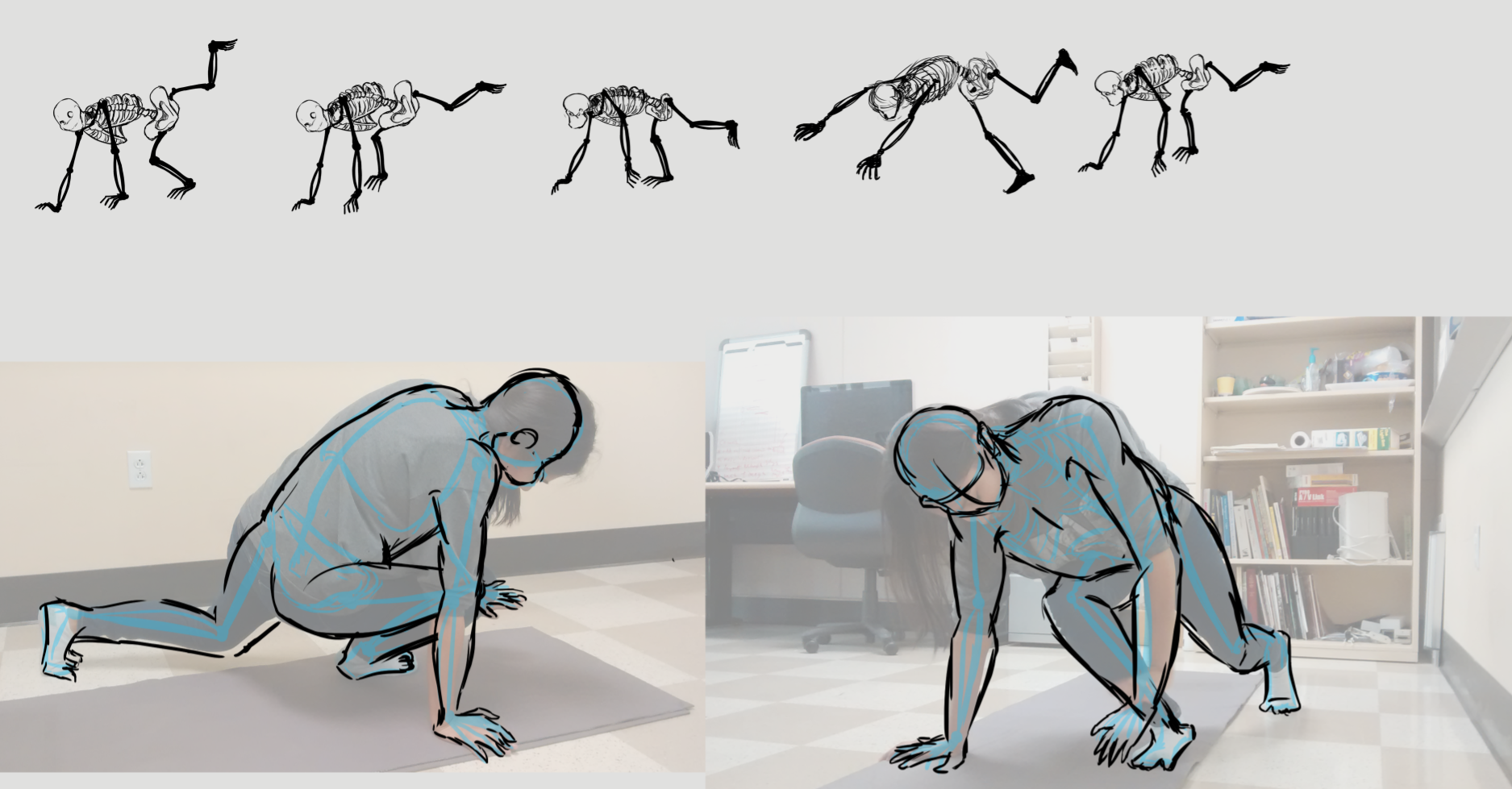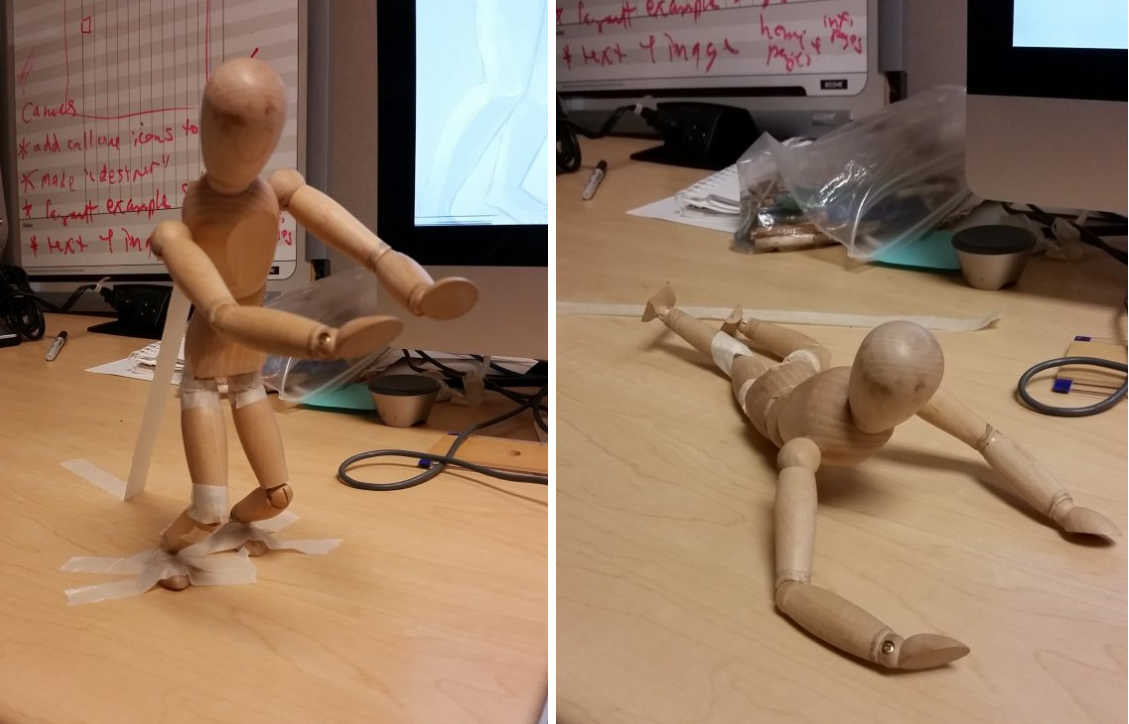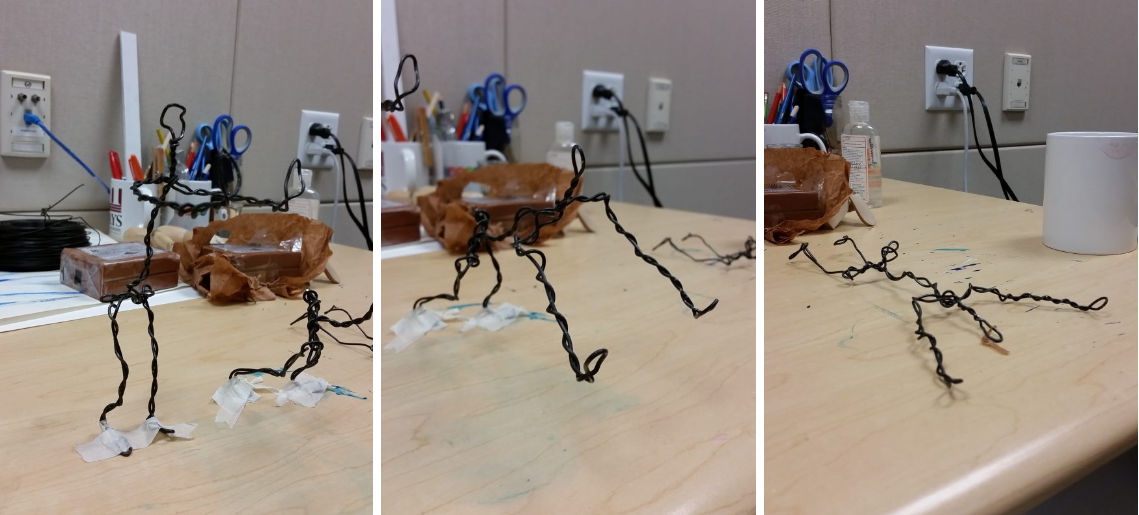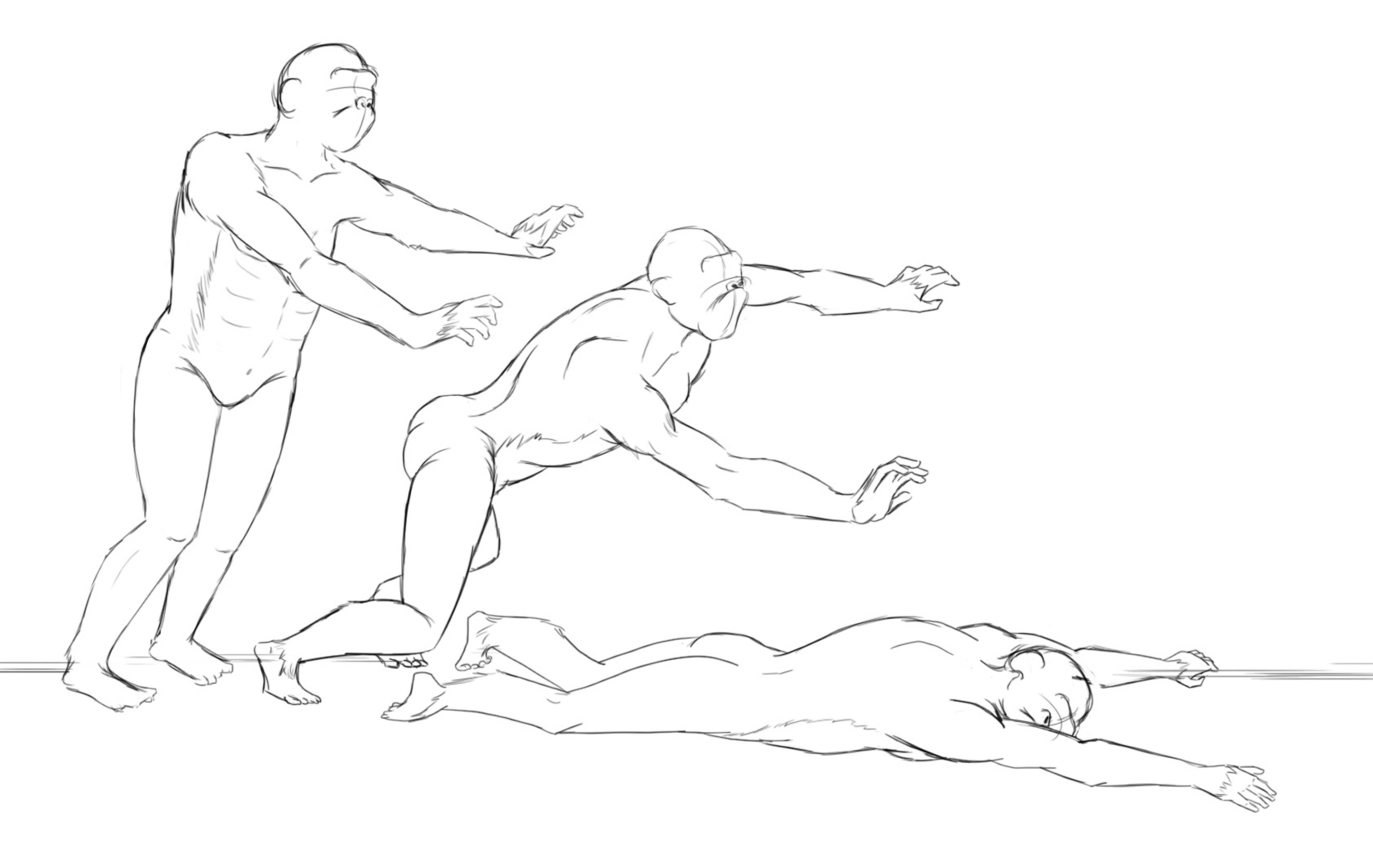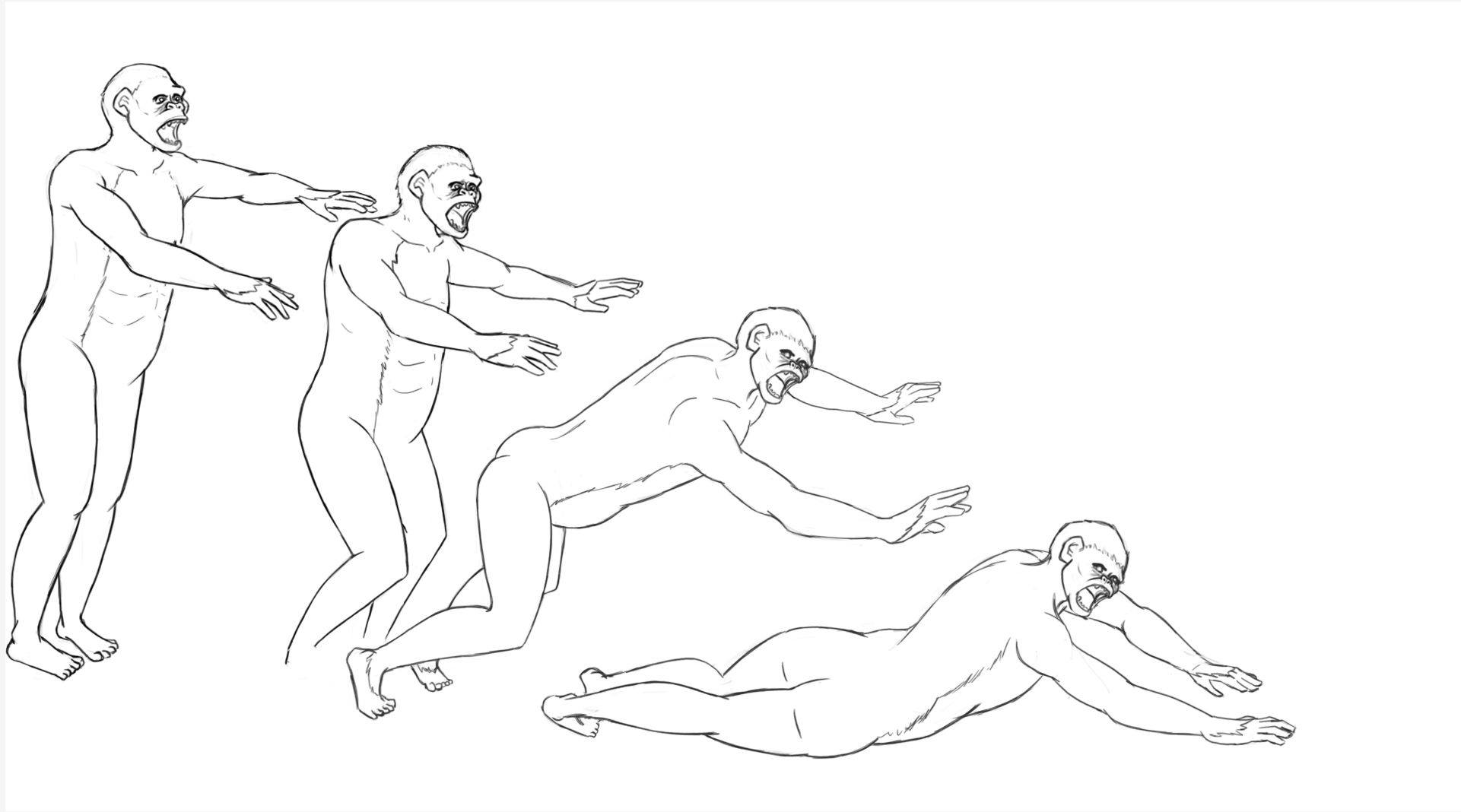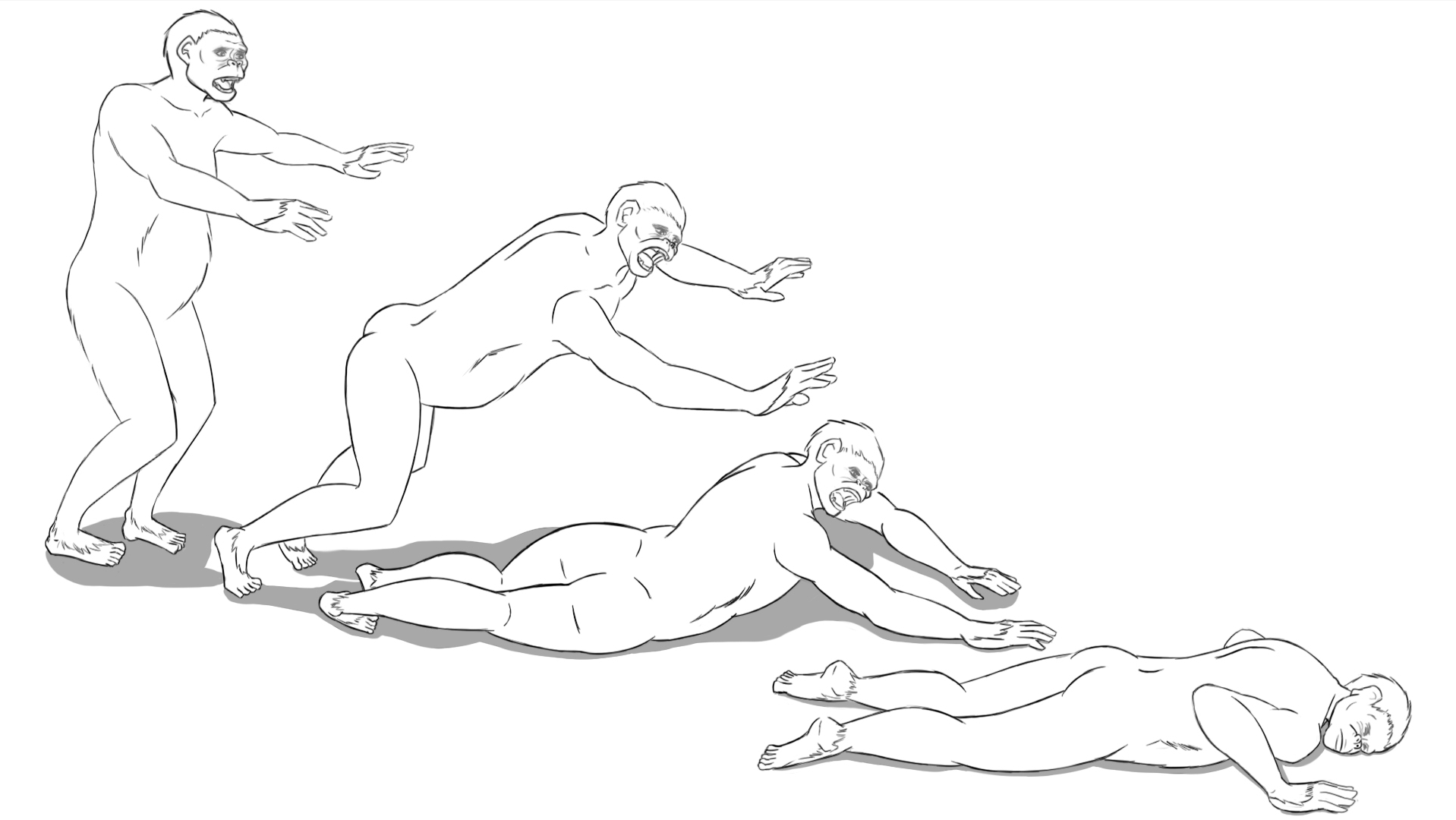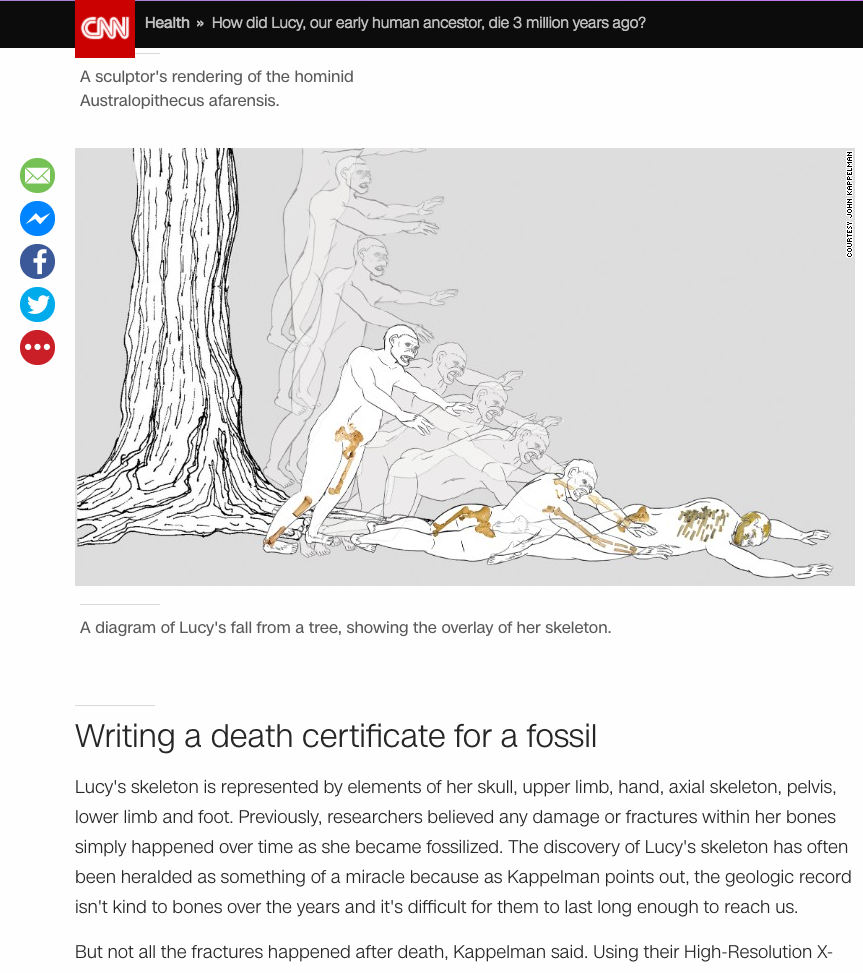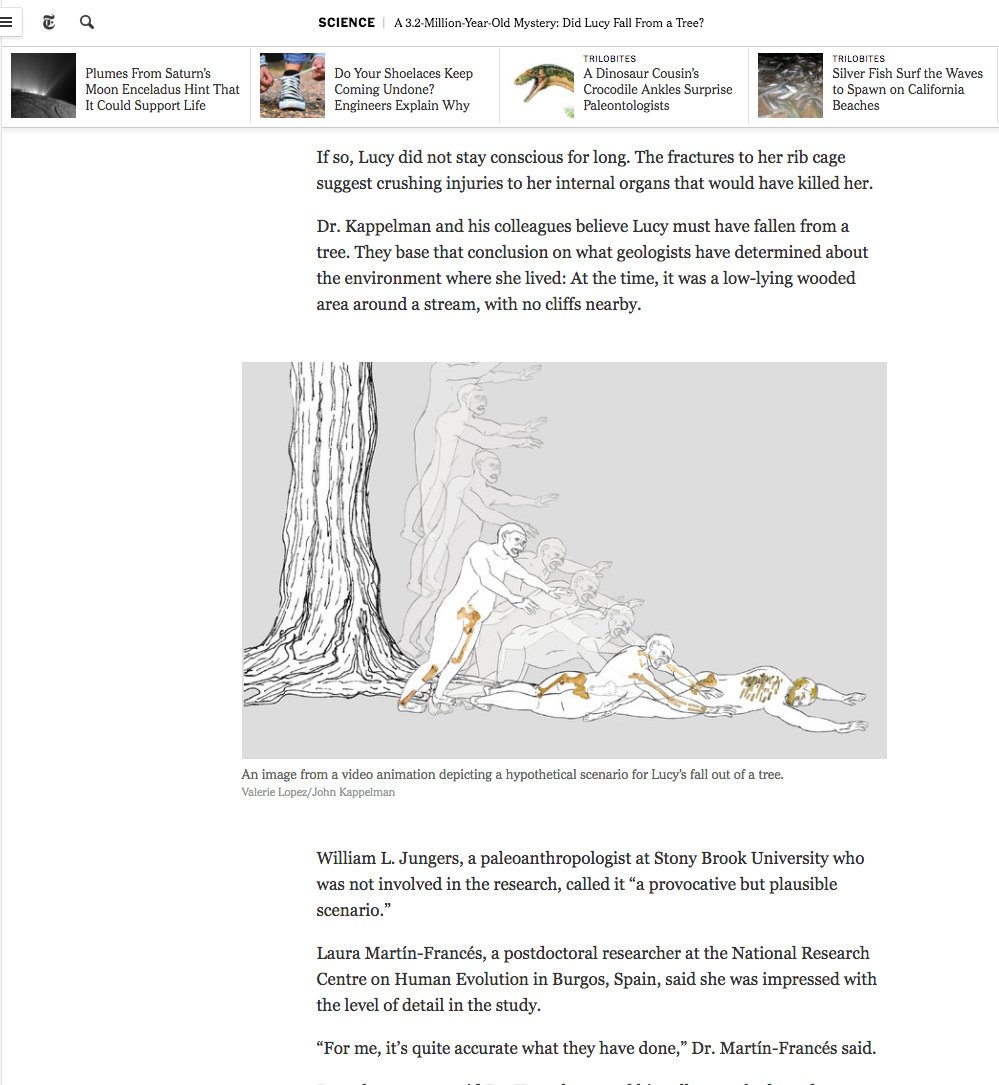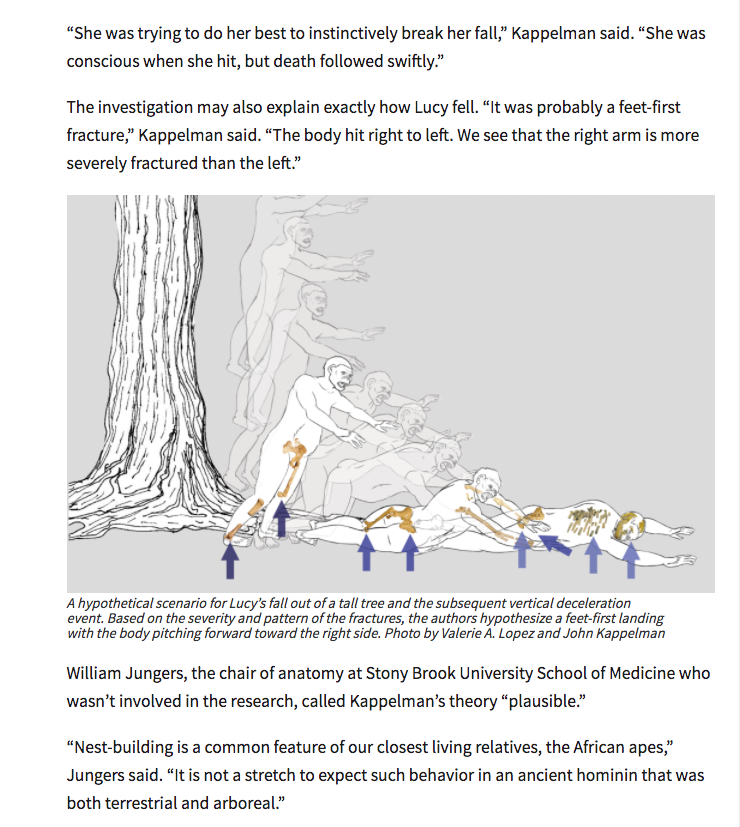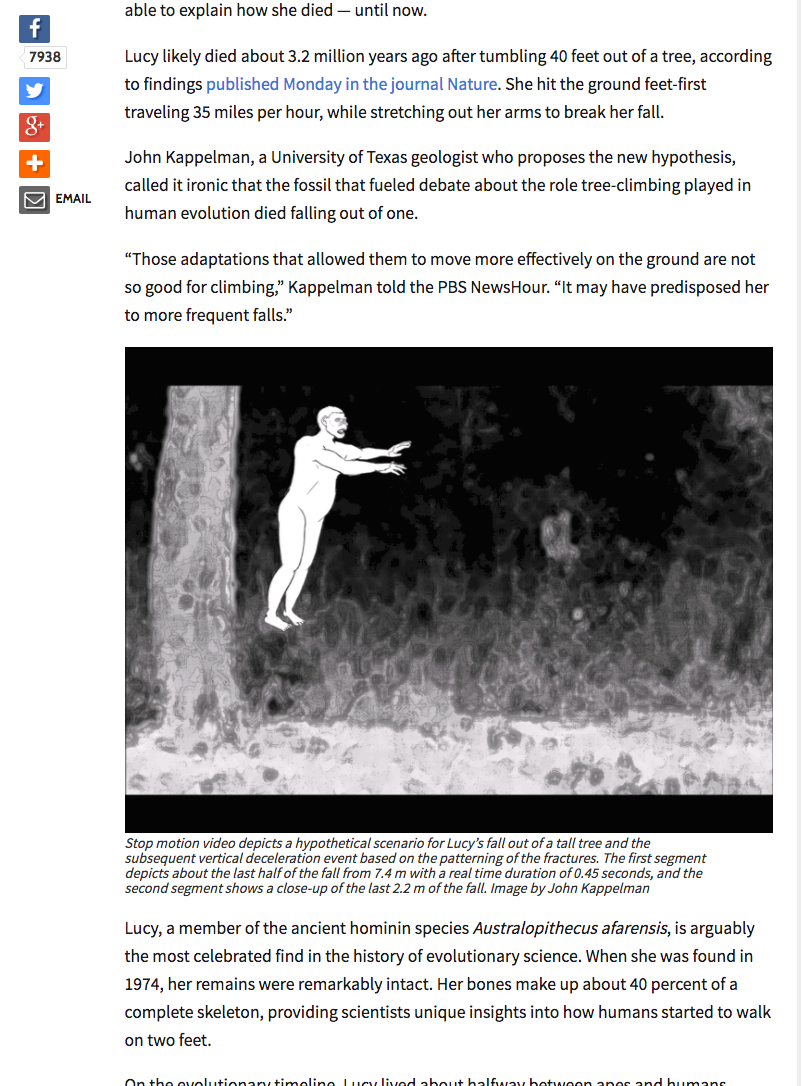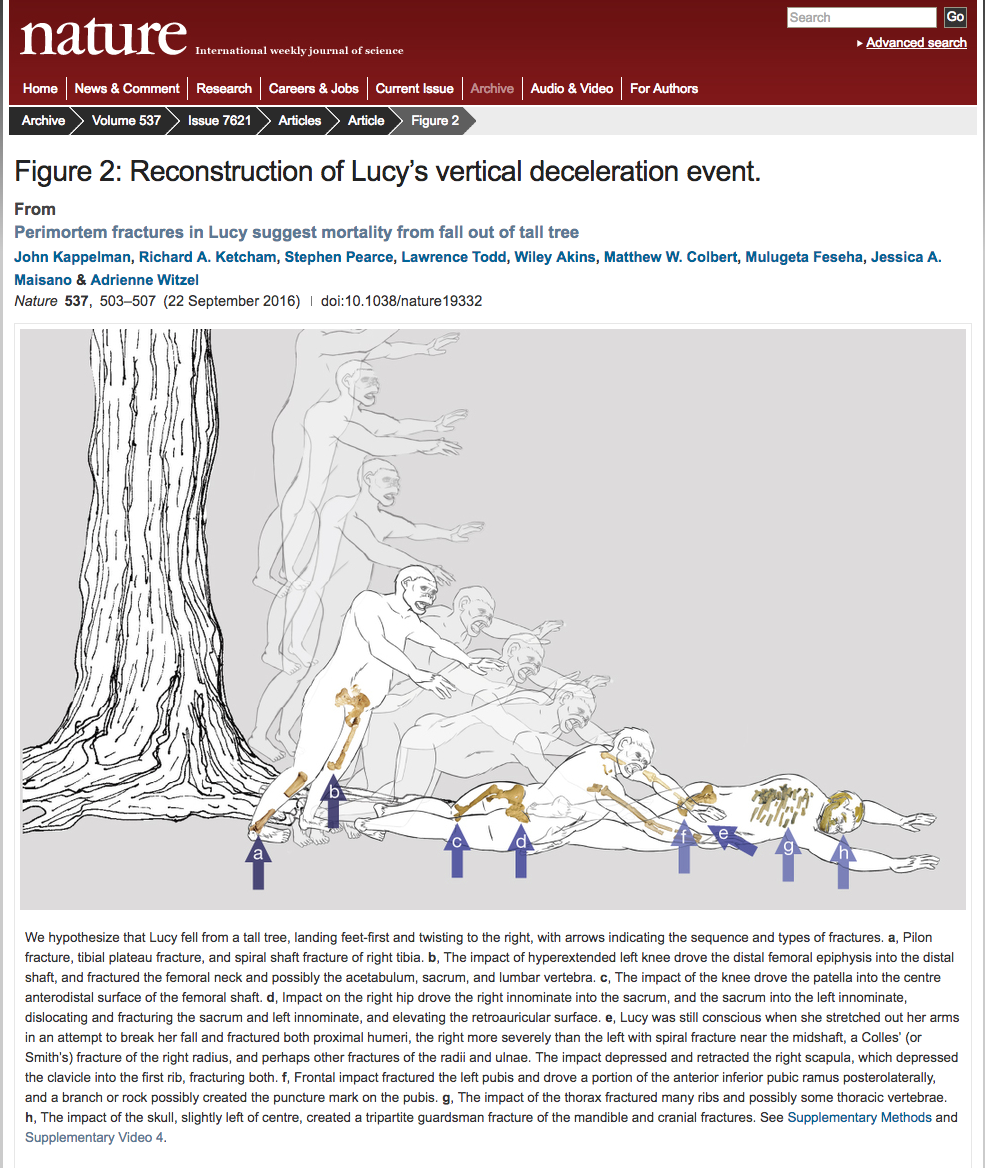e-Lucy
History of Design:
Previous Website:
Photoshop -> Webpage:
CSS changes:
Modals Compare Anatomy
Mobile Responsive Media Queries
Interactive Compare Anatomy:
New Website:
Background:
Found in Ethiopia in 1974, Lucy is one of the oldest and most complete fossils with over 40% of her skeleton found, and shares characteristics with both chimpanzees and humans. Originally thought to have died from natural causes, Dr. John Kappelman and his team discovered evidence to support that she died by injuries consistent with that of a fall from a great height, maybe even from a tree.
Illustration
- First brought by Suloni to help Professor Kappelman visualize his discovery.
- New discovery so had to be kept quiet until accepted by Scientific Journal Nature.
- First request was to illustrate Lucy falling.
- Challenge in drawing her anatomy since shared characteristics with human and chimpanzees.
- Lots of reference material used.
- Request evolved as Professor Kappelman concluded more information.
- Needed more illustrations!
- 1 to 3 to 5 illustrations.
The injuries shown across her body all suggested being the result of falling off from a high distance. The trees at the time would be 40 or more feet tall, which match the description of the height needed for what resulted in the extent of her injuries. This discovery would provide more evidence to suggest that not only did Lucy walk upright like humans, but she did in fact spend some time in trees.
The Resulting Illustration:
- Professor Kappelman added to illustration to create the final illustration.
- Also used for animation!
These were made to be complimentary material to Professor Kappelman’s paper and other material that was sent in to be reviewed by Nature Journal.





